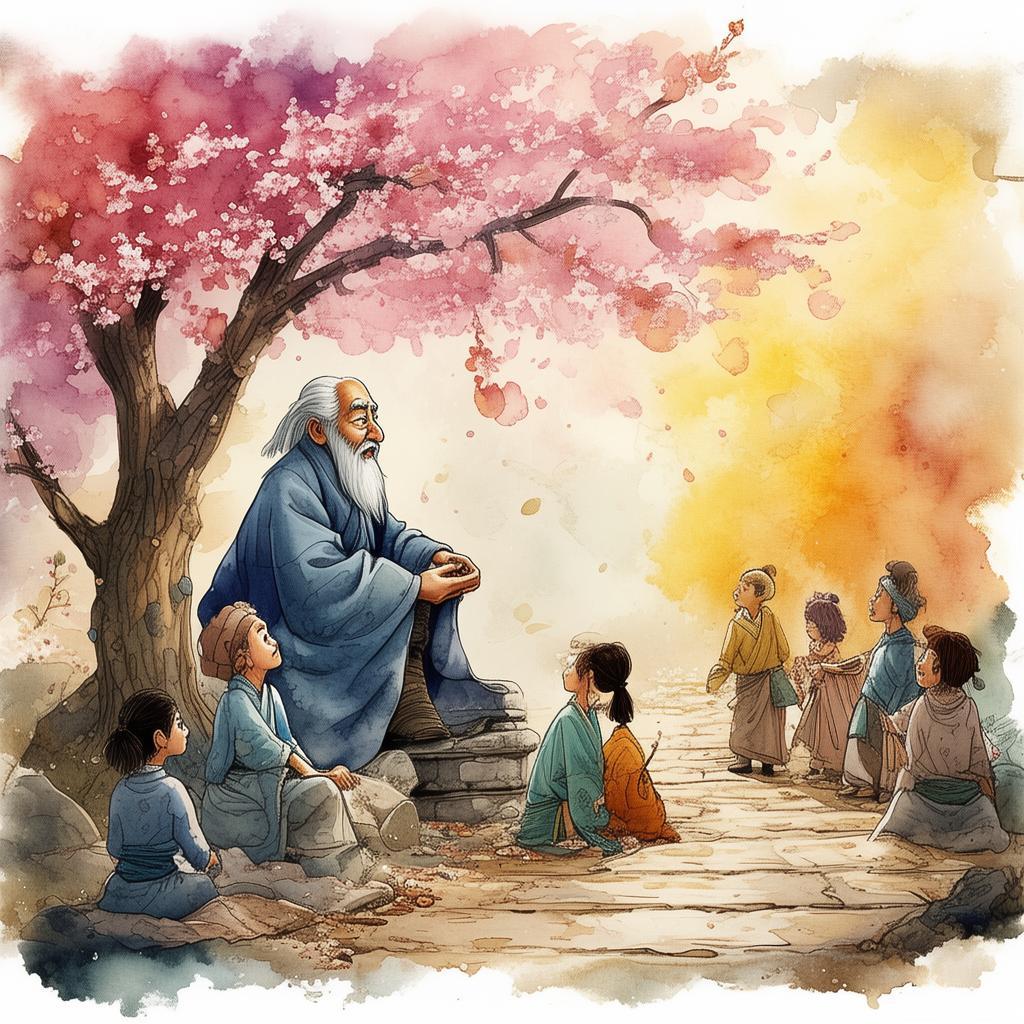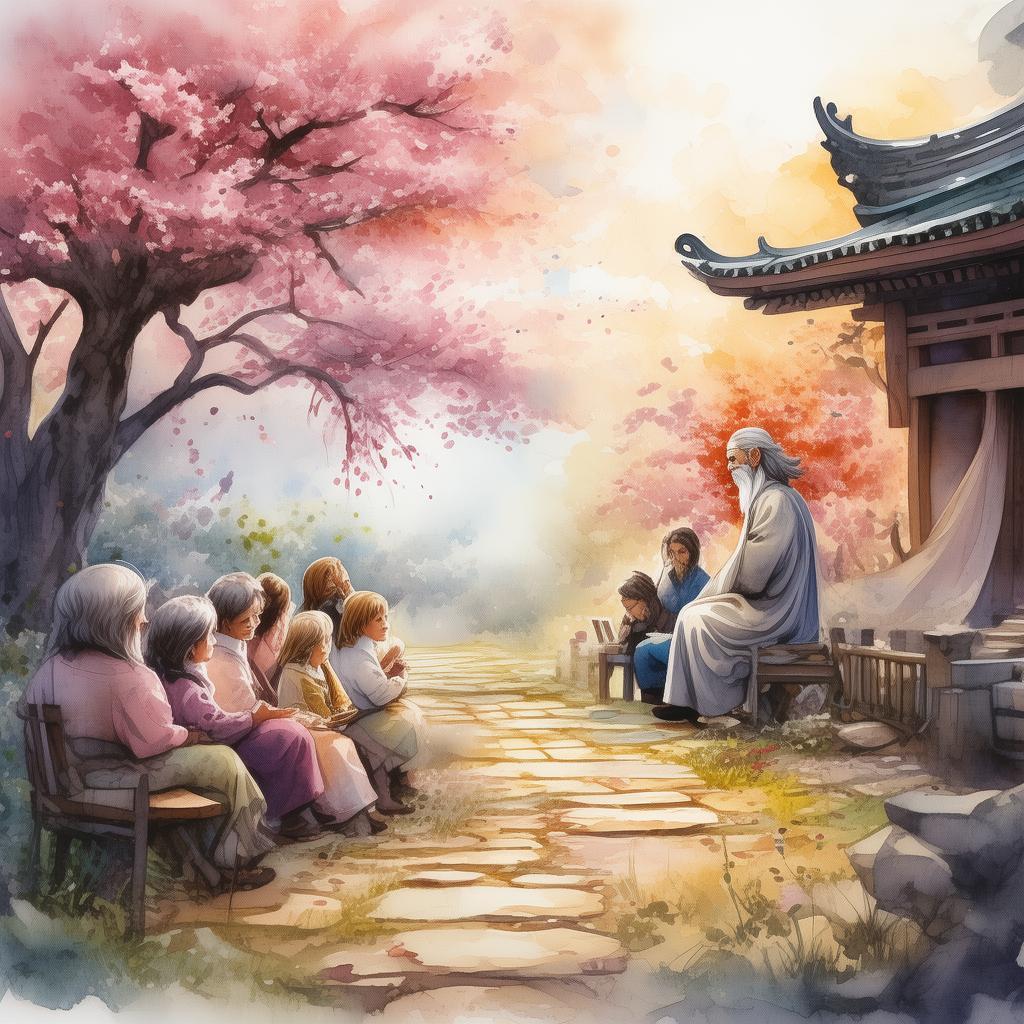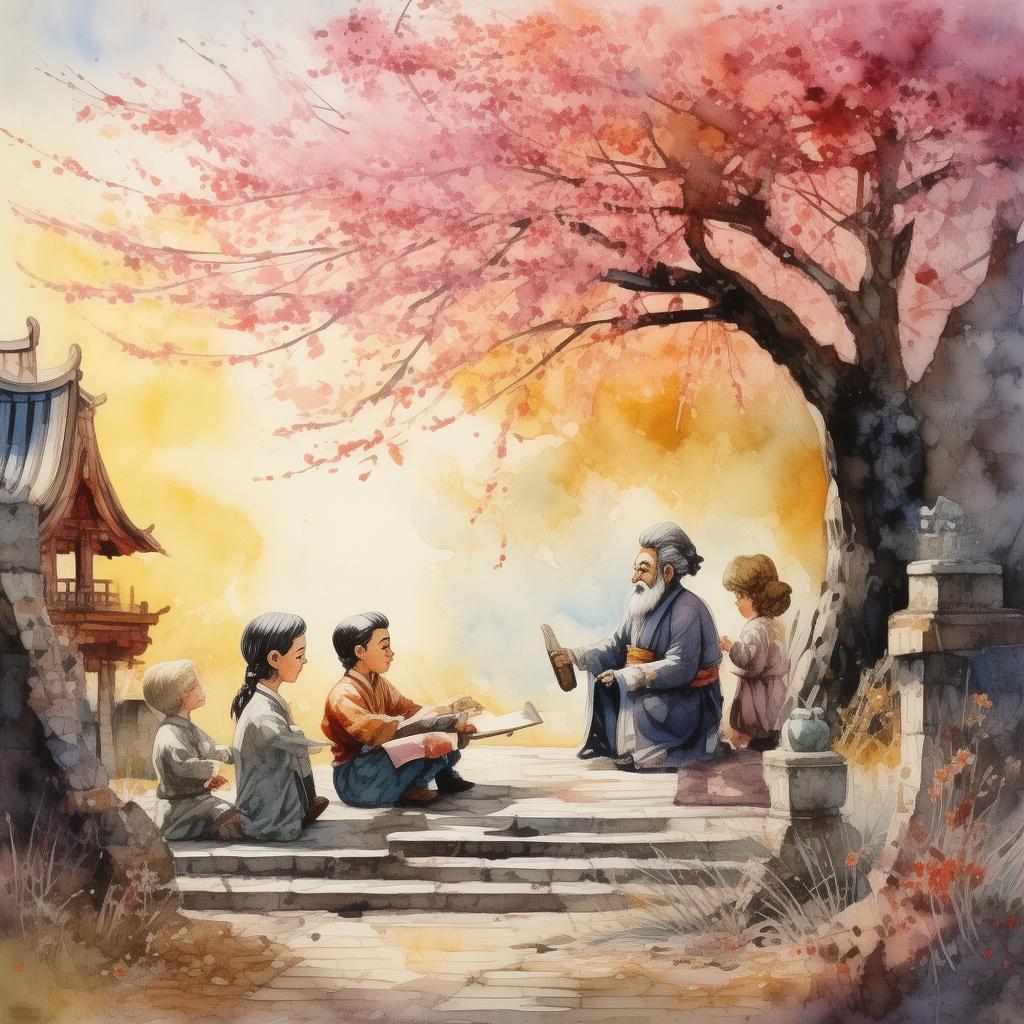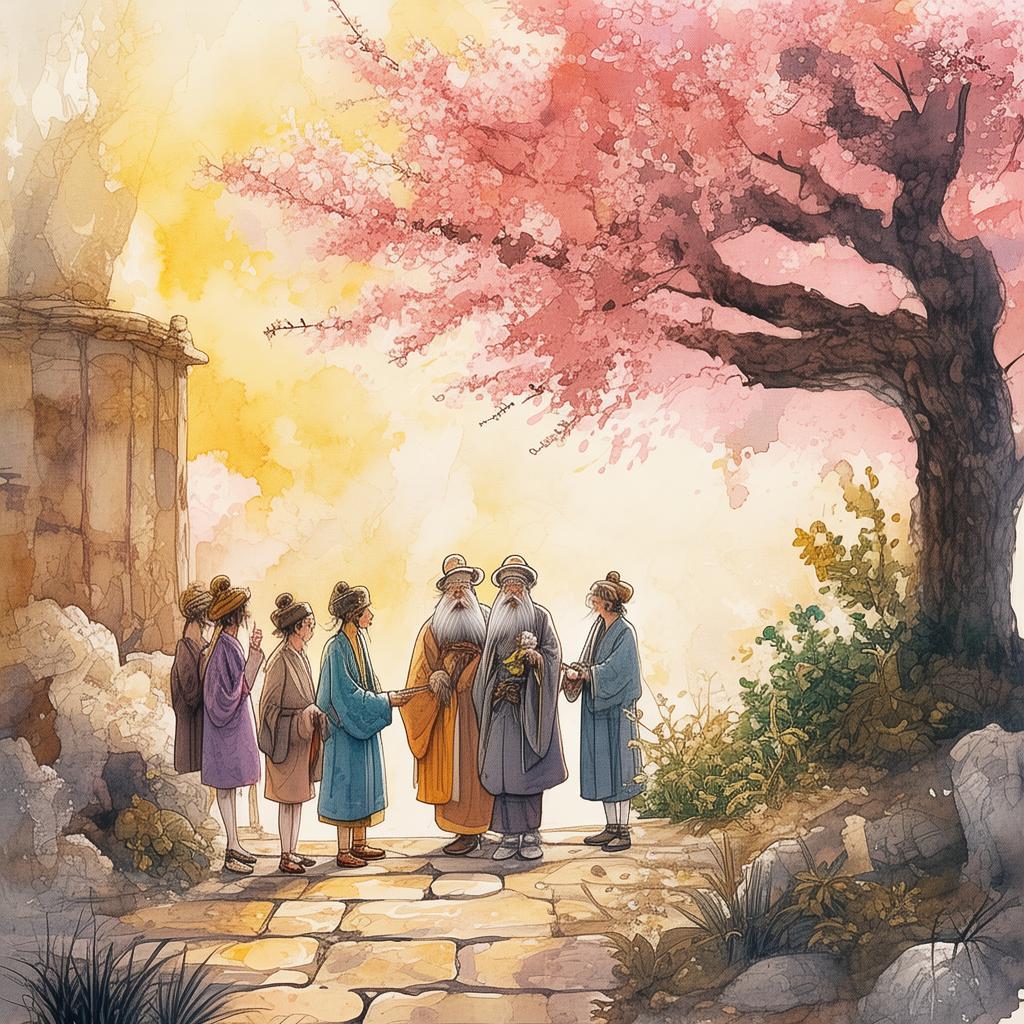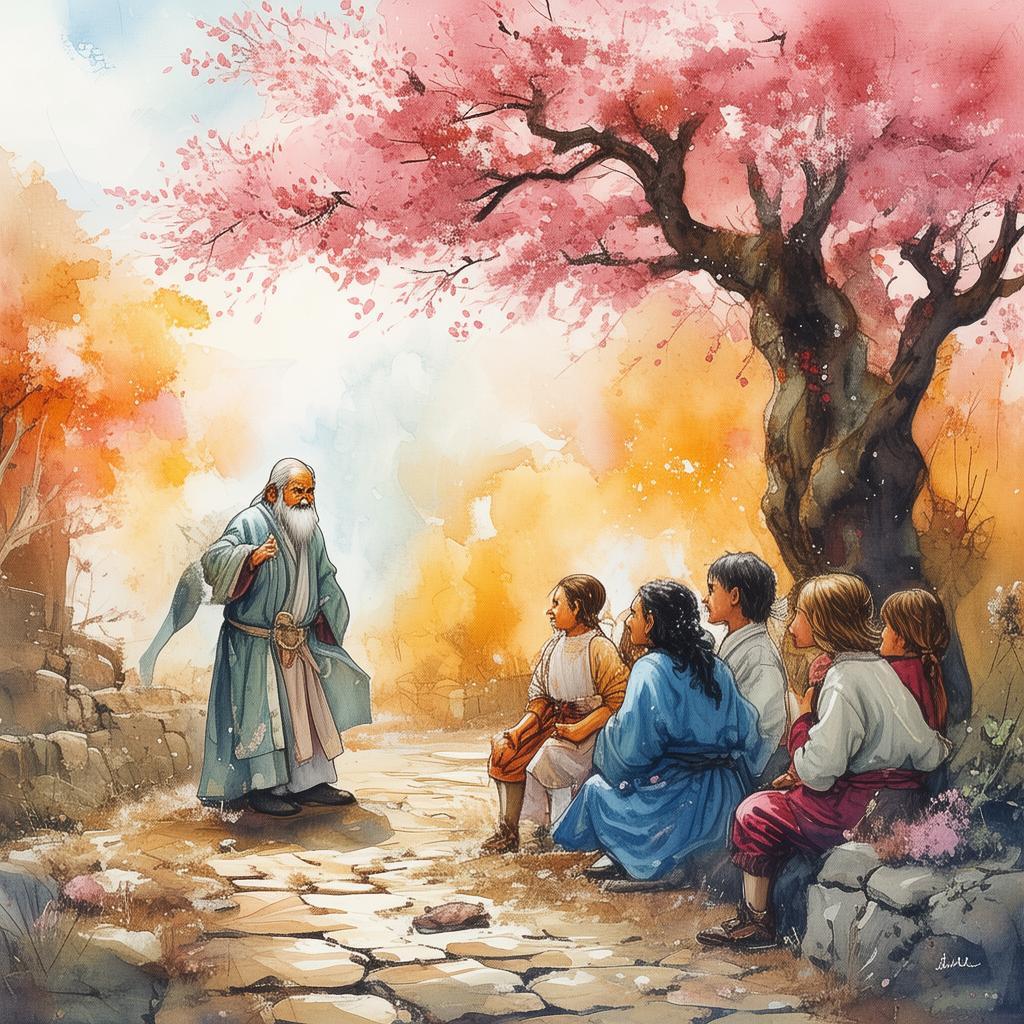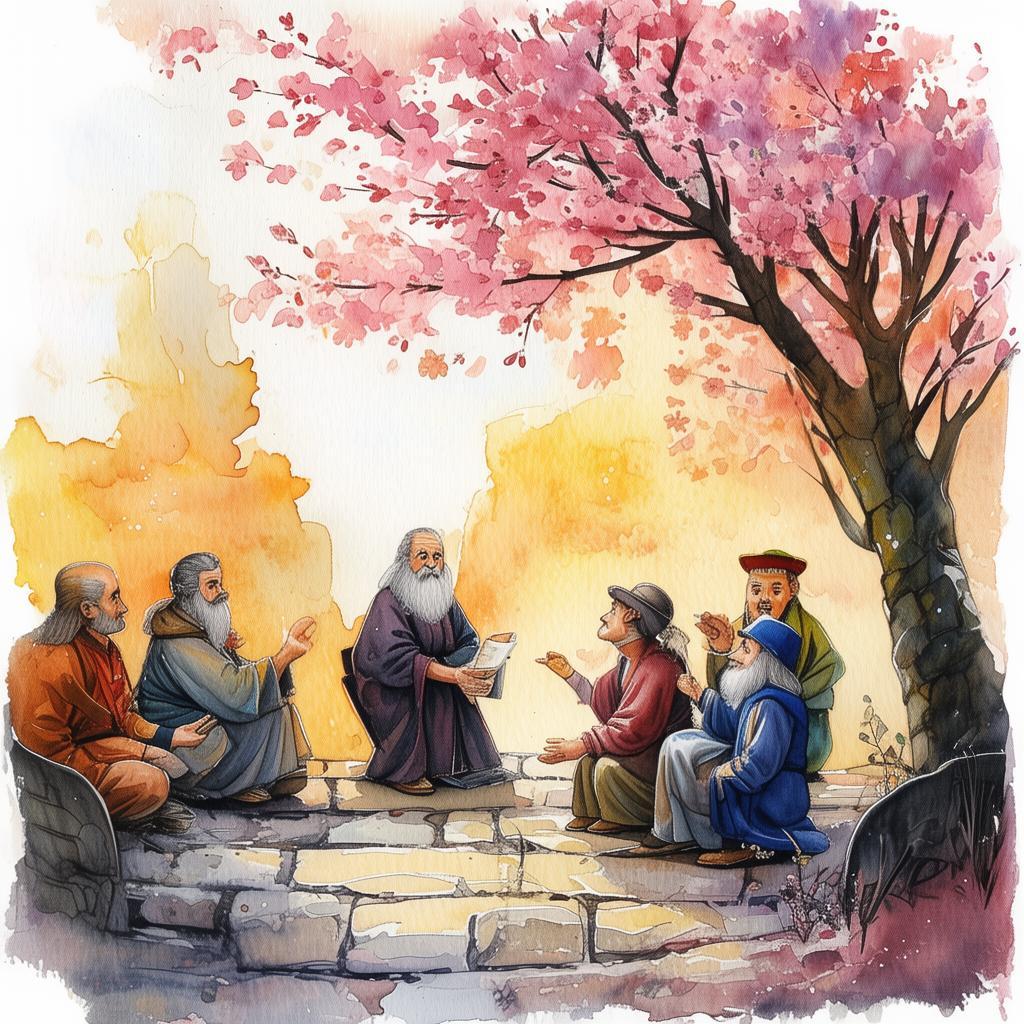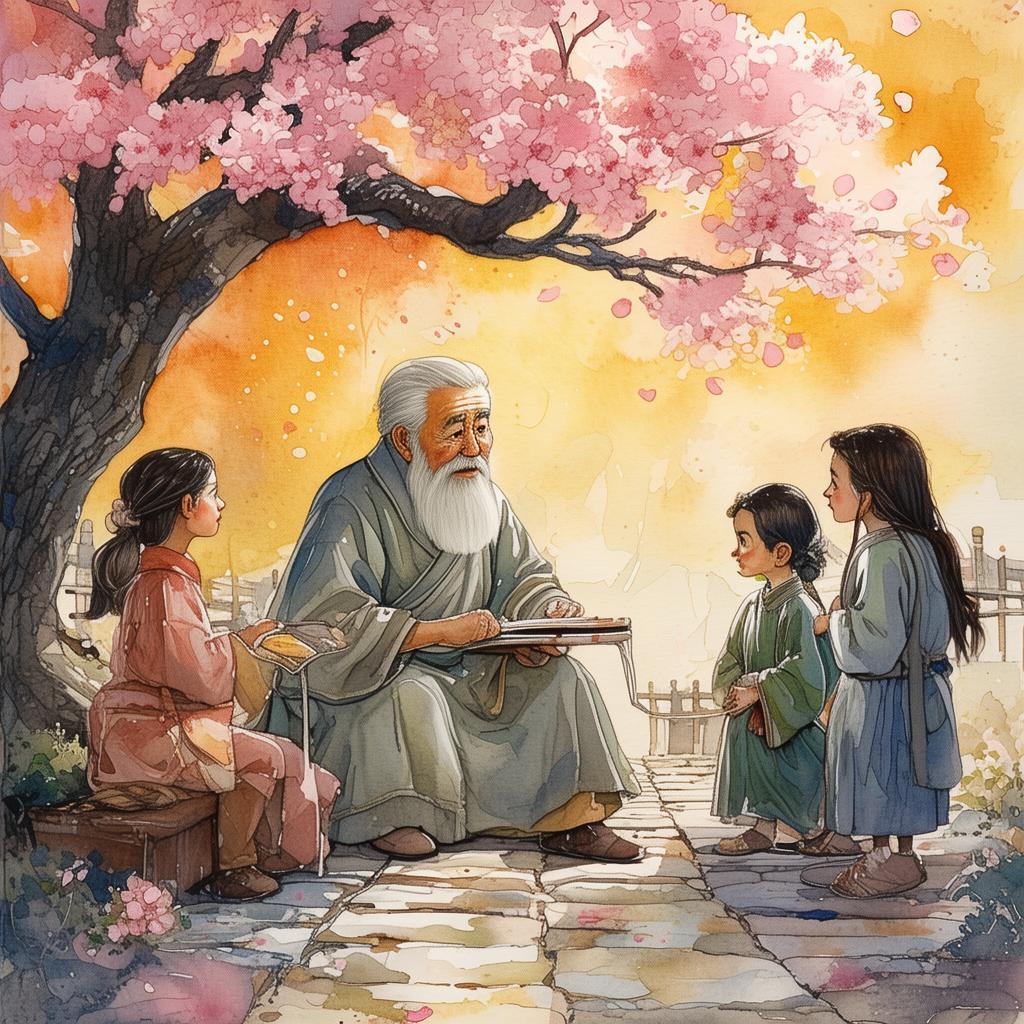The Zenith of Zen and the Circle of Wholeness
In the serene mountains of ancient China, there was a master gardener named Feng, renowned for his unparalleled skill in creating gardens that reflected the tranquility of nature. Feng had dedicated his life to crafting a garden that would be the epitome of Zen harmony, a place where the mind could find peace and the spirit could soar.
The garden, known as the Zenith of Zen, was to be a perfect circle, embodying the infinite and the eternal. Feng worked tirelessly, choosing plants and stones with care, ensuring that every element was in perfect balance. The garden was to be a place where the observer could see the universe in a single moment, a microcosm of the macrocosm.
One day, while Feng was arranging the last of the stones, he noticed a peculiar paradox. The perfect circle, which he had strived for, was now marred by a single, tiny imperfection—a crack in one of the stones. It was so small that it was barely visible, but to Feng, it was a flaw that threatened the integrity of the garden's harmony.
In a moment of despair, Feng sat under the ancient cherry tree that stood at the center of the garden, pondering the meaning of the crack. As he meditated, a Zen master named Wu appeared. Wu had heard of Feng's quest and had come to see the master gardener in his hour of need.
"Master Feng," Wu began, "the circle is perfect in its imperfection. It is the crack that allows us to see the whole. Without it, we would not know the beauty of the garden."
Feng was puzzled by Wu's words but decided to trust the Zen master. He returned to the garden and carefully placed the cracked stone in its place. As he did so, he noticed that the crack actually enhanced the beauty of the garden, allowing light to filter through and create patterns on the ground that seemed to dance with the wind.
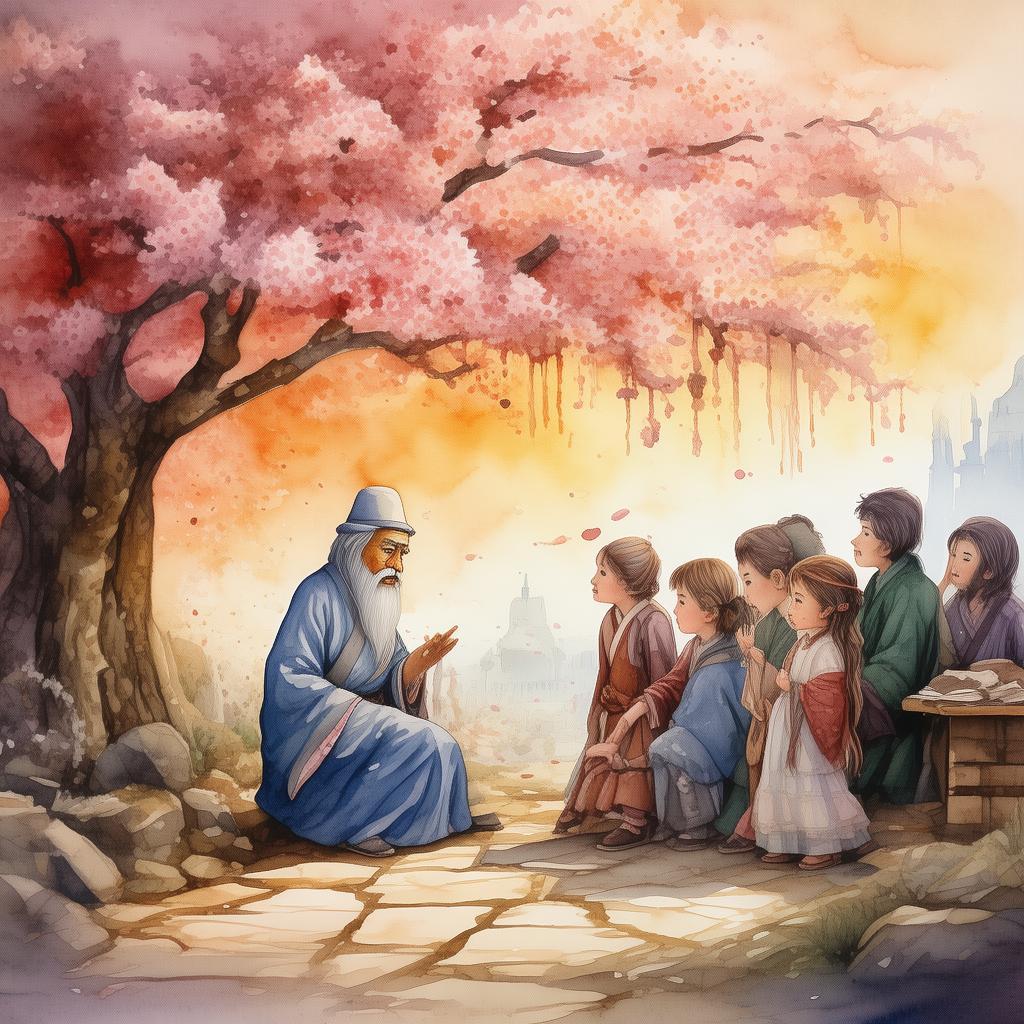
Over the next few days, as Feng continued to tend to the garden, he began to understand Wu's words. The garden was no longer just a place of beauty; it was a living entity, constantly changing and evolving. The perfect circle was no longer a goal to be achieved; it was a concept to be embraced.
One evening, as the sun set, casting a golden glow over the Zenith of Zen, Feng stood at the edge of the garden and watched the world outside. He realized that the garden was a reflection of the universe itself. The imperfections were not flaws but signs of life, reminders that everything was connected.
Feng smiled, knowing that his garden had become a place of profound understanding. The Zenith of Zen was now a place where people could come to find peace, to understand that the beauty of the world lay in its imperfections, and that in the circle of wholeness, there was room for both the perfect and the flawed.
The story of the Zenith of Zen spread far and wide, becoming a parable for the nature of life and the universe. Feng's garden, with its cracked stone, became a symbol of harmony, a place where people could find solace and inspiration.
And so, the garden continued to grow, changing with the seasons, but always remaining a testament to the master gardener's wisdom. It was a place where the circle of wholeness was not just a concept, but a reality, a place where the observer could see the universe in a single moment, a microcosm of the macrocosm, and understand the beauty of life's imperfections.
✨ Original Statement ✨
All articles published on this website (including but not limited to text, images, videos, and other content) are original or authorized for reposting and are protected by relevant laws. Without the explicit written permission of this website, no individual or organization may copy, modify, repost, or use the content for commercial purposes.
If you need to quote or cooperate, please contact this site for authorization. We reserve the right to pursue legal responsibility for any unauthorized use.
Hereby declared.
